Paleolithic Cave Art of Northern Spain: The Tito Bustillo Cave is part of the UNESCO World Heritage: Cave of Altamira and Paleolithic Cave Art of Northern Spain. The Cave of Altamira is situated near the Spanish town of Santillana del Mar. The Cave of Altamira was discovered in 1879. The paintings and engravings in the cave were made by people who inhabited the cave in different periods. The paintings are estimated to be between 14,000 and 20,000 years old. The original Altamira Cave is closed to visitors, it is only possible to visit the Neocave, a full scale exact reproduction of the Altamira Cave. The Tito Bustillo Cave is one of the most important caves of the Palaeolithic Rupestrian Art in Northern Spain. The Tito Bustillo Cave is situated in Ribadesella in Asturias. The cave was discovered in 1968. The most important rock carvings are those of the female body. All these rock carvings are situated in the same cavern. Some of the engravings in the caves of Northern Spain are similar to the Rock Art of the Siega Verde in Spain and the Rock Art of the Côa Valley in Portugal. Photography is not permitted in the caves of Northern Spain. The Cave of Altamira and the Paleolithic Cave Art of Northern Spain gained the status as a UNESCO World Heritage in 1985. Some other prehistoric rock art sites elsewhere in Europe: Alta, Tanum and Val Camonica.
www.werelderfgoedfotos.nl © Copyright World Heritage Photos Classic Car Road Trip
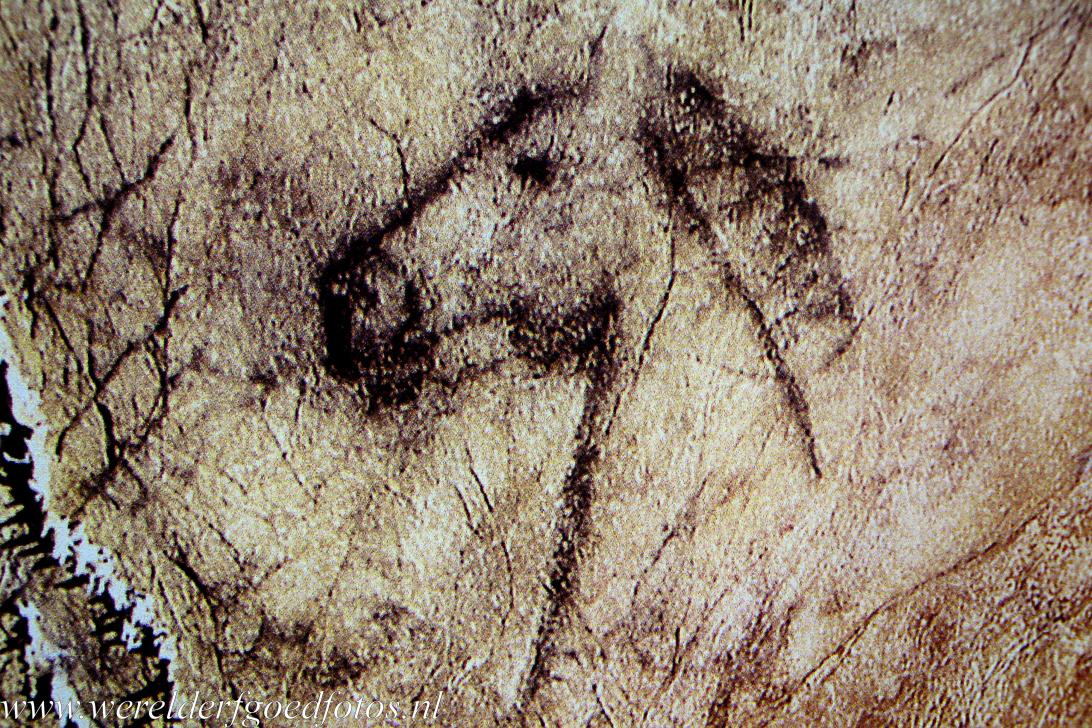
Paleolithic Cave Art of Northern Spain: A horse head, one of the most famous rock drawings of the Tito Bustillo Cave. In the Galeria de los Caballos, the Gallery of the Horses, are many animals carved in the rock, such as big horses, bisons and reindeer. The Tito Bustillo cave art date from 22,000 to 10,000 BC. The Tito Bustillo Cave gained status as a UNESCO World Heritage in 1985.

Paleolithic Cave Art of Northern Spain: A horse head, one of the most famous rock drawings of the Tito Bustillo Cave. In the Galeria de los Caballos, the Gallery of the Horses, are many animals carved in the rock, such as big horses, bisons and reindeer. The Tito Bustillo cave art date from 22,000 to 10,000 BC. The Tito Bustillo Cave gained status as a UNESCO World Heritage in 1985.
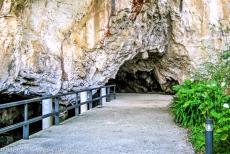
Paleolithic Cave Art of Northern Spain: The entrance to the Tito Bustillo Cave, the cave situated in the small town of Ribadesella in Northern Spain. The cave was discovered in 1968. The cave is one of the most important caves of the Palaeolithic rupestrian art in the north of Spain. Filming and photography is not permitted in the Tito Bustillo Cave.
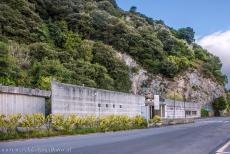
Paleolithic Cave Art of Northern Spain: The Visitor Centre of the Tito Bustillo Cave in Ribadesella. Ribadesella is a town on the north coast of Asturias in northern Spain. The Tito Bustillo Cave is connected to several other caves. The caves were inhabited by the prehistoric humans. The rock art of the Tito Bustillo Cave is an important legacy of Western culture and history.
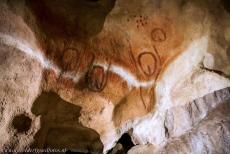
Paleolithic Cave Art of Northern Spain, the Tito Bustillo Cave: Several rock art paintings of the woman's fertility are depicted in one of the caverns, knows as the Camarín de las Vulvas, the Chamber of the Vulvas. In this cavern, the prehistoric people symbolised the woman's fertility. In the Cavern of Lloseta is the first example of a phallus depicted in rock art.
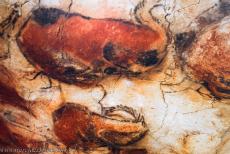
Paleolithic Cave Art of Northern Spain, the Altamira Cave: A detail of the ceiling of the Altamira Cave. The ceiling is covered in painted images such as European bison, deer, goats, horses and painted and engraved symbols. The cave paintings were created somewhere between 14,000 and 20,000 years ago. The original Altamira Cave is closed to visitors, it is only possible to visit the Neocave, a full scale exact reproduction of the Altamira Cave.
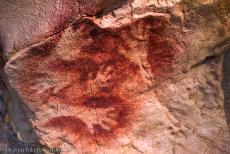
Paleolithic Cave Art of Northern Spain: A copy of a panel of painted hands can be viewed in the Museum of Altamira, situated next to the Altamira Cave. The original cave contains hundreds of rock art paintings and drawings such as bison, deer, horses, wild boar and human hands. Eight of the painted hands are situated on the ceiling of the Polychrome Room in the original cave. Paleolithic Cave Art of Northern Spain was added to the UNESCO World Heritage List in 1985.
